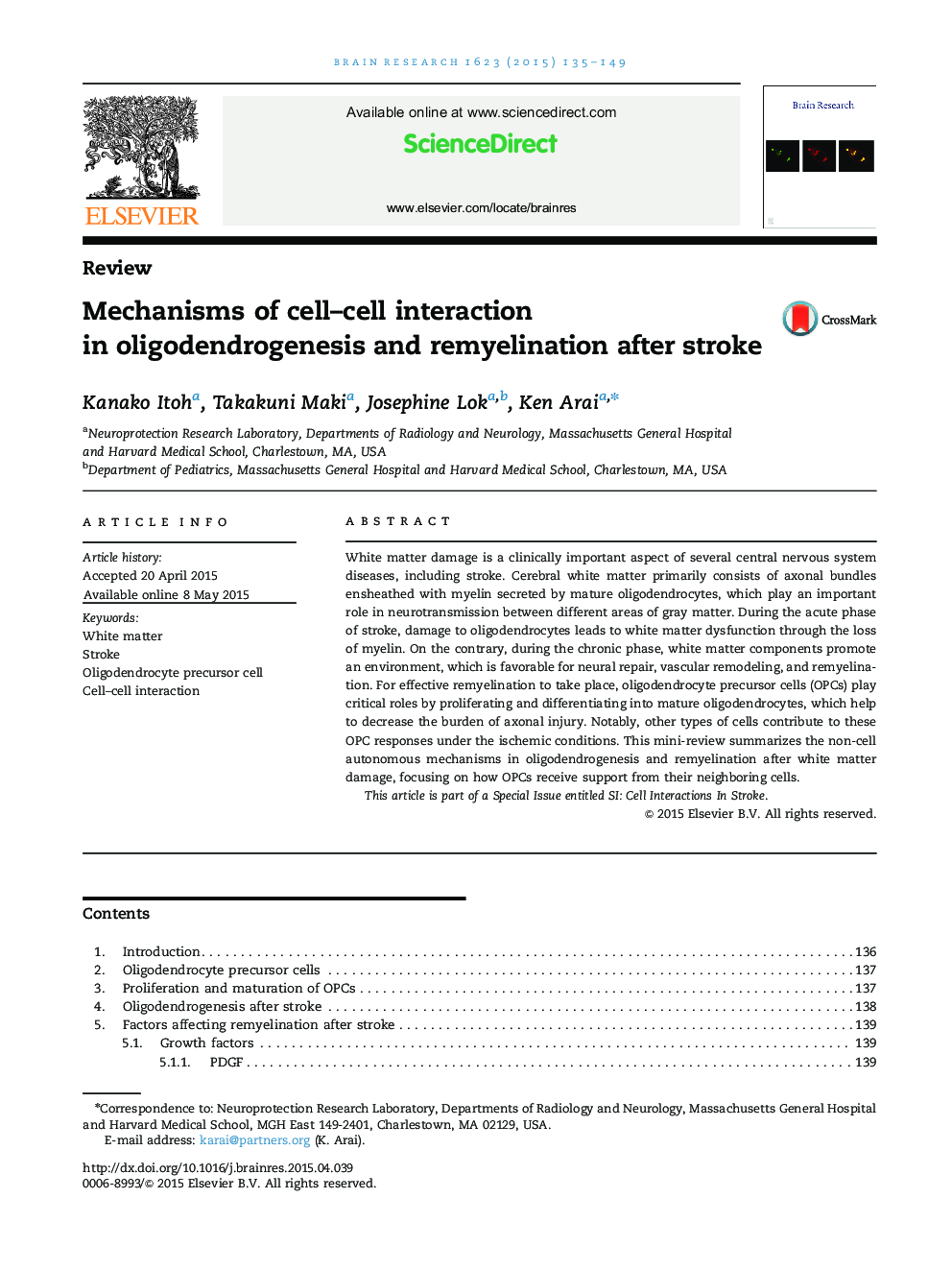| Article ID | Journal | Published Year | Pages | File Type |
|---|---|---|---|---|
| 4323740 | Brain Research | 2015 | 15 Pages |
•Oligodendrocyte precursor cells (OPCs) contribute to white matter function.•Some OPCs remain in an immature state in adult white matter.•After stroke, residual OPCs proliferate and differentiate for oligodendrogenesis.•OPCs communicate with neighboring cells, including astrocytes and endothelial cells.•Those neighboring cells support oligodendrogenesis after stroke.
White matter damage is a clinically important aspect of several central nervous system diseases, including stroke. Cerebral white matter primarily consists of axonal bundles ensheathed with myelin secreted by mature oligodendrocytes, which play an important role in neurotransmission between different areas of gray matter. During the acute phase of stroke, damage to oligodendrocytes leads to white matter dysfunction through the loss of myelin. On the contrary, during the chronic phase, white matter components promote an environment, which is favorable for neural repair, vascular remodeling, and remyelination. For effective remyelination to take place, oligodendrocyte precursor cells (OPCs) play critical roles by proliferating and differentiating into mature oligodendrocytes, which help to decrease the burden of axonal injury. Notably, other types of cells contribute to these OPC responses under the ischemic conditions. This mini-review summarizes the non-cell autonomous mechanisms in oligodendrogenesis and remyelination after white matter damage, focusing on how OPCs receive support from their neighboring cells.This article is part of a Special Issue entitled SI: Cell Interactions In Stroke.
